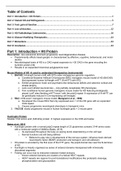Summary
Huntington's Disease Exam/Essay Summary
- Institution
- University College London (UCL)
Summary of notes structured in exam and essay format complete with point, evidence, analysis, and critical thinking. Structured based on marking criteria.
[Show more]



